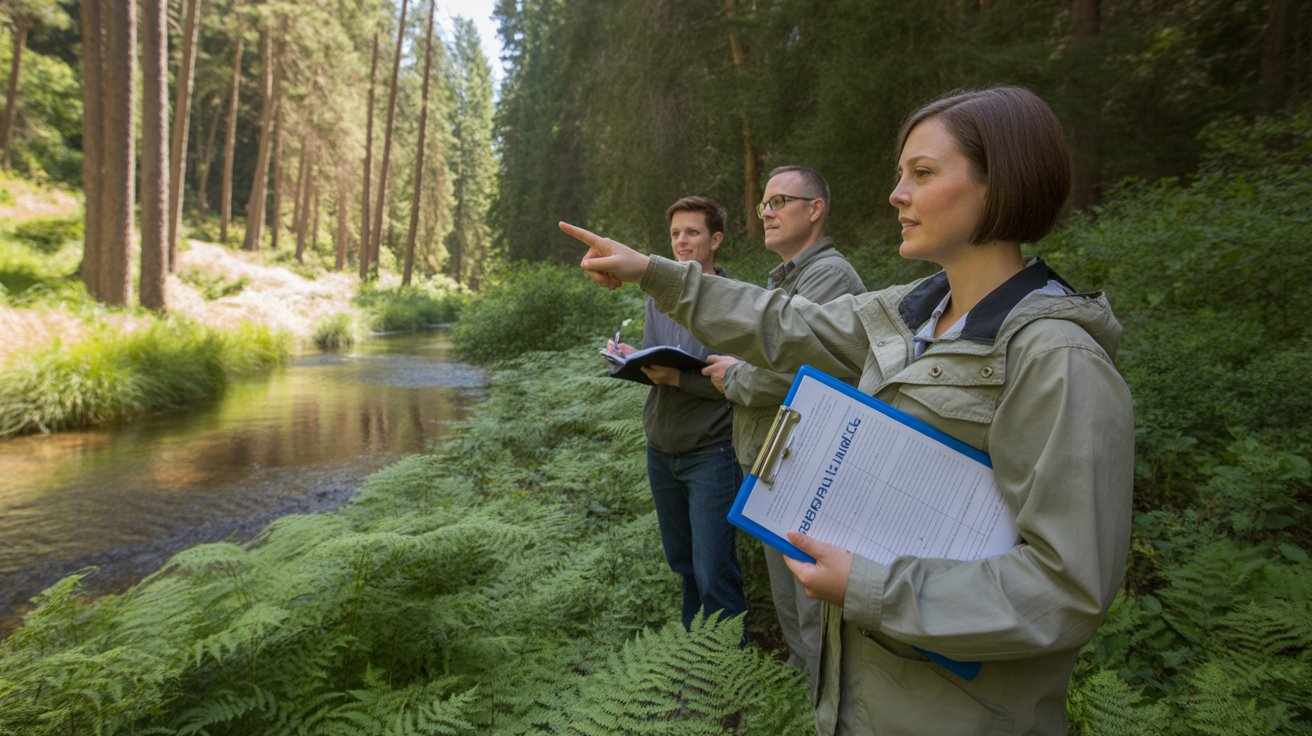In today’s rapidly evolving business landscape, companies face an array of risks that can affect their operations, financial health, and reputation. Among these, environmental risks have emerged as critical factors that require careful attention. The Environmental Due Diligence Process plays a vital role in identifying, assessing, and mitigating these risks, helping businesses navigate complex regulatory landscapes and avoid costly liabilities. This article explores how the Environmental Due Diligence Process functions and why it is essential for mitigating business risks effectively.
What Is the Environmental Due Diligence Process?

The Environmental Due Diligence Process is a systematic evaluation conducted primarily during mergers and acquisitions, property transactions, or major projects, to assess potential environmental liabilities associated with a business or asset. It involves a thorough investigation of a site’s historical and current environmental condition, regulatory compliance, and any existing or potential contamination issues.
This process typically includes phases such as:
Preliminary Environmental Assessment (Phase I ESA): A review of records, site inspection, and interviews to identify potential environmental concerns.
Detailed Site Investigation (Phase II ESA): Sampling and laboratory analysis of soil, water, and building materials to confirm contamination.
Risk Assessment and Reporting: Evaluating the impact of any identified contamination on health, safety, and financial liability.
Why Is Environmental Due Diligence Critical for Businesses?
Businesses operate in environments governed by stringent environmental laws and regulations. Non-compliance or ignorance of environmental risks can lead to:
Legal Penalties: Violations of environmental laws may result in hefty fines, lawsuits, or enforcement actions.
Financial Losses: Cleanup costs, remediation, and damages can burden companies with unexpected expenses.
Reputation Damage: Environmental negligence can harm a company’s brand and relationships with stakeholders.
Operational Disruptions: Environmental hazards might necessitate halting operations, affecting productivity and revenue.
The Environmental Due Diligence Process helps companies uncover hidden liabilities before completing a transaction or proceeding with a project, thus enabling informed decision-making and risk management.
How the Environmental Due Diligence Process Mitigates Business Risks
1. Identifying Hidden Environmental Liabilities
One of the core advantages of the Environmental Due Diligence Process is uncovering environmental issues that may not be immediately visible or disclosed. For example, a property might have historical contamination from chemical spills or underground storage tanks that pose future cleanup costs and regulatory obligations.
By identifying these liabilities early, companies avoid acquiring contaminated properties unknowingly, which could translate into significant financial burdens down the line.
2. Ensuring Regulatory Compliance
Environmental laws and regulations vary by jurisdiction and are continually evolving. The due diligence process includes a review of permits, compliance records, and local regulations, helping businesses ensure that the asset or operation complies with all environmental requirements.
This proactive compliance check reduces the risk of future penalties and enforcement actions, which could otherwise disrupt business activities and harm financial performance.
3. Facilitating Informed Negotiations and Deal Structuring
Environmental findings during due diligence can affect the terms and conditions of a transaction. If contamination or risks are identified, buyers can negotiate price reductions, indemnities, or require sellers to undertake remediation before closing.
In some cases, companies may decide to walk away from deals if environmental risks are too great. The due diligence process empowers businesses with the information necessary to make sound financial decisions and structure deals that reflect the true value and risks involved.
4. Planning for Environmental Management and Remediation
When environmental issues are identified, the due diligence report often includes recommendations for remediation, monitoring, or ongoing environmental management. This information allows companies to budget for cleanup activities and implement risk mitigation strategies that protect employees, communities, and the environment.
Proper planning reduces unexpected costs and enhances sustainability efforts, aligning the company’s operations with environmental stewardship goals.
5. Protecting Reputation and Enhancing Stakeholder Confidence
Businesses increasingly face scrutiny from investors, customers, regulators, and communities regarding their environmental performance. Demonstrating that environmental risks have been thoroughly assessed and managed through the Environmental Due Diligence Process builds trust and enhances corporate reputation.
This transparency can open doors to new investment opportunities, partnerships, and customer loyalty while reducing the likelihood of public relations crises linked to environmental negligence.
Real-World Examples of Environmental Due Diligence Impact
Industrial Property Acquisition: A manufacturing company discovered through environmental due diligence that the site they planned to purchase had soil contamination from past operations. With this knowledge, they negotiated a price adjustment and established a remediation plan, avoiding unexpected cleanup costs after acquisition.
Corporate Mergers: During a merger, one company’s environmental due diligence uncovered ongoing violations related to hazardous waste disposal. This information enabled both parties to address compliance issues pre-merger, reducing legal risk and ensuring smoother integration.
Real Estate Development: A developer conducting environmental due diligence found asbestos and lead paint in buildings slated for redevelopment. Early identification allowed them to factor abatement costs into their budget and schedule, preventing project delays and health risks.
Conclusion
The Environmental Due Diligence Process is a crucial component of modern risk management for businesses. By systematically identifying environmental liabilities, ensuring regulatory compliance, and facilitating informed decision-making, this process mitigates financial, legal, operational, and reputational risks. As environmental regulations tighten and public awareness grows, companies that prioritize environmental due diligence position themselves for sustainable growth and long-term success.
Web:- https://adeptus.co.uk/environmental/reports-for-planning/
#Environmentalduediligencereports




Write a comment ...